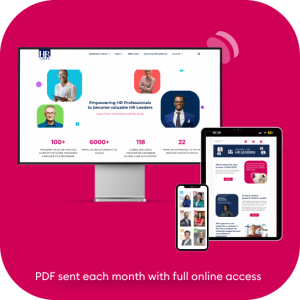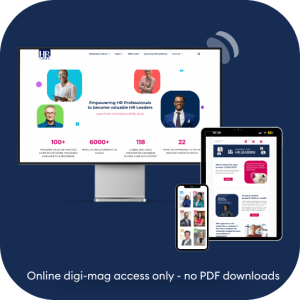In today’s digital age, social media has become an inseparable part of both our personal and professional lives. From connecting with friends and family to fostering professional networks, platforms like LinkedIn, Instagram, Twitter, and Facebook have embedded themselves into the fabric of daily routines. While social media can offer valuable opportunities for professional development and collaboration, it also poses potential risks to workplace productivity.
For businesses, the challenge lies in understanding the double-edged nature of social media. On one hand, it can enhance communication and foster innovation. On the other hand, unchecked usage can lead to distractions, decreased focus, and conflicts. This blog explores the multifaceted impact of social media engagements on workplace productivity and outlines best practices for maintaining a balanced, productive approach.
The Positive Impact of Social Media on Workplace Productivity
Enhanced Communication and Collaboration
In a connected world, social media platforms have evolved beyond personal use, becoming powerful tools for professional communication. Platforms like Slack, Microsoft Teams, and Workplace by Meta enable real-time collaboration, breaking down traditional communication barriers.
For instance, remote and hybrid teams can use these platforms to coordinate projects, share updates, and provide immediate feedback, boosting overall efficiency. This accessibility can lead to faster decision-making and improved teamwork, allowing businesses to maintain a high level of productivity even when employees are scattered across the globe.
Networking and Professional Development
Professional networking sites such as LinkedIn have transformed how employees connect with industry peers, potential clients, and thought leaders. Employees can use these platforms to expand their professional networks, stay informed about industry trends, and engage in meaningful discussions with experts.
Moreover, social media provides easy access to webinars, online workshops, and industry-related content that can contribute to continuous learning and skill development. By leveraging social media for professional growth, employees stay engaged, inspired, and more likely to contribute innovative ideas to the workplace.
Boosting Employee Morale and Engagement
Social media also plays a role in enhancing employee morale by creating opportunities for recognition and engagement. Companies often use social platforms to celebrate employee achievements, announce promotions, or share motivational stories. This public acknowledgment can foster a sense of belonging and encourage a more positive company culture.
Additionally, social media can serve as a tool for employee engagement by fostering internal communities where employees can connect over shared interests, contributing to overall job satisfaction and retention.
The Negative Impact of Social Media on Workplace Productivity
Distraction and Time-Wasting
While social media provides numerous benefits, its addictive nature can severely impact productivity. Studies have shown that employees often spend excessive time browsing personal social media accounts during work hours. Frequent notifications, endless scrolling, and the lure of engaging content can lead to significant time wasted, reducing the employee’s focus on their work responsibilities.
In fact, according to a 2023 study, employees spend an average of 2.5 hours per workday on personal social media, contributing to a decline in productivity across various industries. The constant pull of social media can fragment attention, making it difficult for employees to concentrate on tasks that require deep focus and sustained effort.
Workplace Conflicts and Misinformation
Another downside of social media is its potential to create conflicts within the workplace. Miscommunication, inappropriate posts, or the spreading of misinformation can lead to disagreements and tension between colleagues. For instance, an employee’s controversial social media post can spark internal disputes, harming workplace harmony and collaboration.
Moreover, employees may inadvertently share sensitive company information or private discussions on social media, jeopardizing company security and exposing the business to reputational risk.
Mental Health and Burnout
Social media’s perpetual stream of information can also contribute to employee burnout. Employees may feel the pressure to be constantly “online” and connected, even outside of work hours. This “always-on” culture blurs the line between professional and personal time, leading to stress, anxiety, and reduced work-life balance.
Additionally, the comparison culture often promoted on social media can negatively impact employees’ mental well-being. Employees may feel inadequate when comparing themselves to peers or competitors, leading to lower self-esteem and job dissatisfaction. This can contribute to disengagement, absenteeism, and decreased performance.
Best Practices for a Balanced Approach to Social Media in the Workplace
Establish Clear Social Media Policies
To mitigate the negative effects of social media while reaping its benefits, businesses must implement clear social media policies. These guidelines should outline acceptable and unacceptable uses of social media during work hours, ensuring employees understand when and how they can access social platforms.
For instance, companies may allow limited personal social media use during designated break times but prohibit excessive scrolling during core work hours. A well-crafted policy should address potential risks, such as data security concerns, while promoting the responsible use of social media for professional purposes.
Providing employees with social media guidelines empowers them to use these tools mindfully, without compromising workplace productivity or security.
Encourage Social Media for Professional Growth
Rather than banning social media altogether, companies should encourage employees to use it for professional development. Platforms like LinkedIn, industry forums, and specialized groups offer opportunities for skill-building, knowledge sharing, and networking.
Businesses can even create internal social media communities where employees can discuss trends, share resources, or collaborate on projects. By promoting professional growth through social media, companies can enhance employee satisfaction and innovation, turning social media into a valuable asset for their workforce.
Use Productivity Tools to Minimize Distractions
To strike a balance between social media use and productivity, companies can encourage the use of productivity tools designed to limit distractions. Tools like FocusMe, RescueTime, or Cold Turkey can help employees block social media sites during working hours or track their time spent on non-work-related activities.
Setting designated times for social media breaks—such as during lunch or after hours—can also help employees stay focused while still enjoying their favorite platforms. Providing clear boundaries ensures that social media does not become a constant interruption.
Foster Employee Advocacy Through Social Media
Employee advocacy programs, where employees share company-related content on their personal social media accounts, can boost brand visibility while enhancing employee engagement. Encouraging employees to act as brand ambassadors allows them to feel more connected to the company’s success and mission.
However, it’s important to implement these programs carefully, ensuring they don’t overwhelm employees or detract from their productivity. Best practices include offering guidance on what to share, maintaining voluntary participation, and avoiding an “always-on” expectation from employees.
Train Employees on Healthy Social Media Habits
Providing training on mindful social media usage is another effective way to balance the benefits of social platforms with productivity. Workshops or online courses can teach employees how to manage their time, avoid multitasking, and stay focused on their work tasks.
Emphasizing the importance of work-life balance and offering resources for mental well-being can also help employees develop healthy digital habits, reducing the risk of burnout while maintaining a positive online presence.
Measuring the Impact of Social Media on Productivity
Track Time Spent on Social Media During Work Hours
To understand how social media is affecting workplace productivity, businesses can use software tools to track employee time spent on non-work-related platforms. Tools like Hubstaff, Time Doctor, or DeskTime can provide valuable insights into how social media usage is influencing productivity levels.
Analyzing the data collected from these tools can help identify trends and offer a clearer picture of whether social media usage is beneficial or detrimental to the business.
Conduct Employee Surveys and Feedback Sessions
Regular employee surveys and feedback sessions can further shed light on how social media impacts workplace dynamics. By asking employees to share their experiences, companies can identify any issues related to distraction or burnout and implement tailored solutions.
Survey results can also highlight opportunities for leveraging social media for professional growth or improving collaboration, allowing the company to fine-tune its policies and training programs accordingly.
Conclusion
Social media plays a significant role in today’s workplace, offering both opportunities and challenges. While it can foster communication, engagement, and professional growth, it can also pose risks to productivity if not managed effectively. Striking the right balance requires clear policies, mindful usage, and the integration of tools that encourage focused work.
By following best practices such as setting boundaries, fostering healthy habits, and encouraging the professional use of social media, businesses can harness the positive potential of social media while minimizing its distractions. The goal is to create a balanced, productive, and digitally-savvy workforce in an era where social media is here to stay.
Guest writer.


























